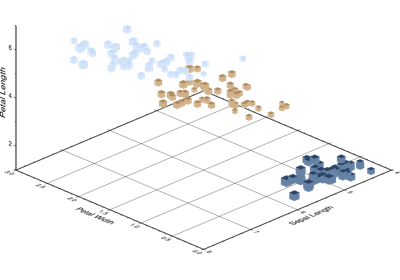pygmt.info¶
-
pygmt.info(table, **kwargs)[source]¶ Get information about data tables.
Reads from files and finds the extreme values in each of the columns reported as min/max pairs. It recognizes NaNs and will print warnings if the number of columns vary from record to record. As an option, it will find the extent of the first two columns rounded up and down to the nearest multiple of the supplied increments given by spacing. Such output will be in a numpy.ndarray form
[w, e, s, n], which can be used directly as the region argument for other modules (hence only dx and dy are needed). If the per_column option is combined with spacing, then the numpy.ndarray output will be rounded up/down for as many columns as there are increments provided in spacing. A similar option nearest_multiple option will provide a numpy.ndarray in the form of[zmin, zmax, dz]for makecpt.Full option list at https://docs.generic-mapping-tools.org/latest/gmtinfo.html
Aliases:
C = per_column
I = spacing
T = nearest_multiple
V = verbose
- Parameters
table (str or np.ndarray or pandas.DataFrame or xarray.Dataset) – Pass in either a file name to an ASCII data table, a 1D/2D numpy array, a pandas dataframe, or an xarray dataset made up of 1D xarray.DataArray data variables.
per_column (bool) – Report the min/max values per column in separate columns.
spacing (str) –
'[b|p|f|s]dx[/dy[/dz...]]'. Report the min/max of the first n columns to the nearest multiple of the provided increments and output results in the form[w, e, s, n].nearest_multiple (str) –
'dz[+ccol]'Report the min/max of the first (0’th) column to the nearest multiple of dz and output this in the form[zmin, zmax, dz].verbose (str) –
Select verbosity level [Default is w], which modulates the messages written to stderr. Choose among 7 levels of verbosity:
q - Quiet, not even fatal error messages are produced
e - Error messages only
w - Warnings [Default]
t - Timings (report runtimes for time-intensive algorthms);
i - Informational messages (same as “verbose=True”)
c - Compatibility warnings
d - Debugging messages
- Returns
output (np.ndarray or str) – Return type depends on whether any of the ‘per_column’, ‘spacing’, or ‘nearest_multiple’ parameters are set.
np.ndarray if either of the above parameters are used.
str if none of the above parameters are used.
